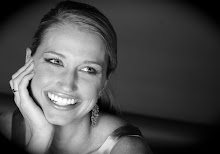 Image via Uzengia
Image via Uzengia There is another selection, however, that deserves a place on the list. Haunted by a clandestine love affair, is there a better candidate for literature’s most eerie abode than Wuthering Heights? Both origin and silent chronicler of an ill-starred union, the house itself is, from the opening pages, shrouded in the murky gloom of solitude and demise. It piques the curiosity of an earnest tenant, the apparitions skulking about disrupt even the hungriest slumber. The stones are "jutting", the carvings "grotesque", the structure itself faces a daily whirlwind of unrest. The decor is "villainous", the dogs "haunt the premises" and Lockwood finds it "swarming with ghosts and goblins." Miss Brontë's deftly woven descriptions paint a picture brimming with ghoulish flavor. On to the devilish delights that await!
Wuthering Heights is the name of Mr. Heathcliff's dwelling, "wuthering" being a significant provincial adjective, descriptive of the atmospheric tumult to which its station is exposed in stormy weather. Pure, bracing ventilation they must have up there at all times, indeed. One may guess the power of the north wind blowing over the edge by the excessive slant of a few stunted firs at the end of the house, and by a range of gaunt thorns all stretching their limbs one way, as if craving alms of the sun. Happily the architect had the foresight to built it strong. The narrow windows are deeply set in the wall, and the corners defended with large jutting stones.
Before passing the threshold, I paused to admire a quantity of grotesque carving lavished over the front, and especially about the principal door; above which, among a wilderness of crumbling griffins and shameless little boys, I detected the date "1500," and the name Hareton Earnshaw." I would have made a few comments, and requested a short history of the place from the surly owner; but his attitude at the door appeared to demand my speedy entrance or complete departure, and I had no desire to aggravate his impatience previous to inspecting the penetralium.
One step brought us into the family sitting-room without any introductory lobby or passage. They call it here "the house" pre-eminently. It includes kitchen and parlour generally. But, I believe, at Wuthering Heights the kitchen is forced to retreat altogether into another quarter - at least I distinguished a chatter of tongues and a clatter of culinary utensils deep within; and I observed to signs of roasting, boiling, or baking about the huge fireplace, nor any glitter of copper saucepans and tin cullenders on the walls. One end, indeed, reflected splendidly both light and heat from ranks of immense pewter dishes, interspersed with silver jugs and tankards, towering row after row, on a vast oak dresser, to the very roof. The latter had never been underdrawn; its entire anatomy lay bare to an inquiring eye, except where a frame of wood laden with oatcakes and clusters of legs of beef, mutton and ham concealed it. Above the chimney were sundry villainous old guns and a couple of horse-pistols, and, by way or ornament, three gaudily painted canisters disposed along its ledge. The floor was smooth, white stone; the chairs, high-backed, primitive structures painted green, one or two heavy black ones lurking in the shade. In an arch under dresser reposed a huge liver-coloured bitch pointer surrounded by a swarm of squealing puppies, and the other dogs haunted other recesses.
- Wuthering Heights by Emily Brontë (1847)


No comments:
Post a Comment